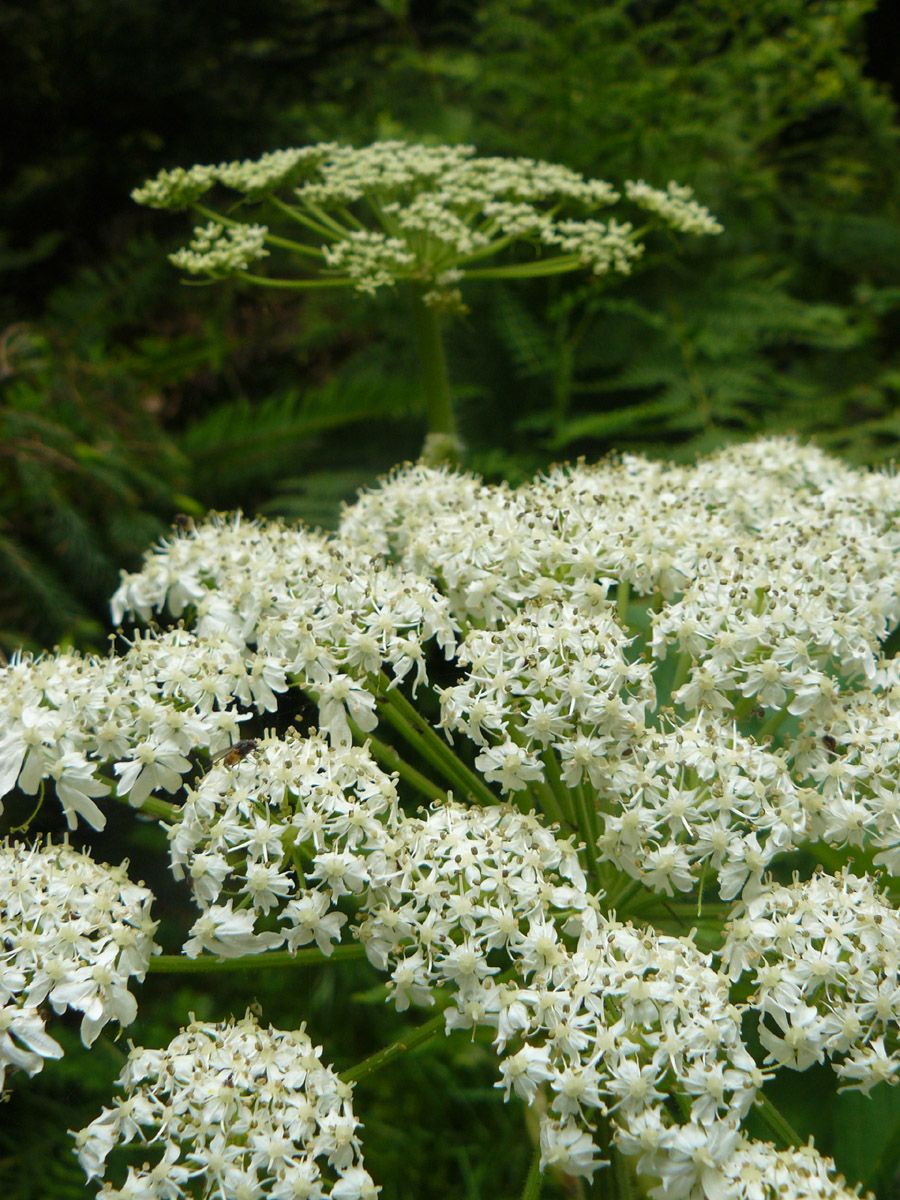 Location Taken: Ruby Beach, Olympic National Park, Washington, USA
Location Taken: Ruby Beach, Olympic National Park, Washington, USA
Time Taken: June 2008
Pretty, isn’t it?
Don’t touch it, though.
This is either a giant hogweed or a cow parsnip. If this picture included more of the plant than just the flowers, I’d be able to tell. Neither is a pleasant plant to encounter, though hogweed is by far worse. Both are phototoxic. If you get their sap on your skin and then expose it to ultraviolet light, you develop a rash. For cow parsnip, it’s an annoyance, sort of like poison ivy. It itches for a few days, and the skin darkens some for a bit, with a possibility of lasting for a few months and blisters if you’re overly sensitive. Not too big a deal, and parts of it are edible.
Giant hogweed, on the other hand, is an invasive weed to be feared. Its rash is not a matter of a few days. Instead, it’s a major rash with blisters and burns. And when I say burns, I mean third-degree. Your skin darkens majorly, perhaps permanently, and the burns can leave scars. If you get it in your eyes, you can go blind. It’s not a plant to mess with. Which is why I’m glad I’ve got a tendency not to mess with plants I don’t recognize, since I hadn’t heard about giant hogweed until a while after I took this photo. It hasn’t hit Maryland, so there aren’t warnings out there about avoiding it.
Like many invasive species, giant hogweed was imported for decorative reasons. It is a pretty flower, after all. And 19th century gardeners seemed to be particularly stupid when it came to what plants they brought over, since that’s when many of the worst invasive species were released into the wild. There’s multiflora roses all over the woods behind my house, thick enough that you can’t really pass through them. They’re native to China, Japan, and Korea, and were brought over in the late 1800’s. Water Hyacinths, introduced to the US at about the same time, are from South America, and are both very lovely and the worst invasive water weed in the world. They grow very fast, clogging up waterways around the world, and are very difficult to fully eradicate since they can grow back from fragments. Admittedly, the ones my mom bought for her ponds seem to have all died over the years. Either they were a less resilient variant or the fact that the ponds have a slight leak and go dry every so often was a bit too much for them. Kudzu, The Vine That Ate The South, was introduced later, in the early 1900’s, as erosion control. Somehow I doubt erosion’s the primary problem in areas it was introduced anymore, what with the plant growing up to a foot a day.
Our modern ecosystems are full of plants that don’t belong. We keep bringing over tasty or pretty plants and animals, and they get out. In some cases, the escapee finds itself better than the competition, and it takes over, faster than the local plants can manage. It’s one of the reasons we’re currently in the middle of a major extinction event. Technically, we humans are an invasive species too. We’re doing best in the parts of the world we aren’t native to, and nothing there can stand up to us. At least we can also fight back against other invasions, even if we caused just about all of them to happen.
